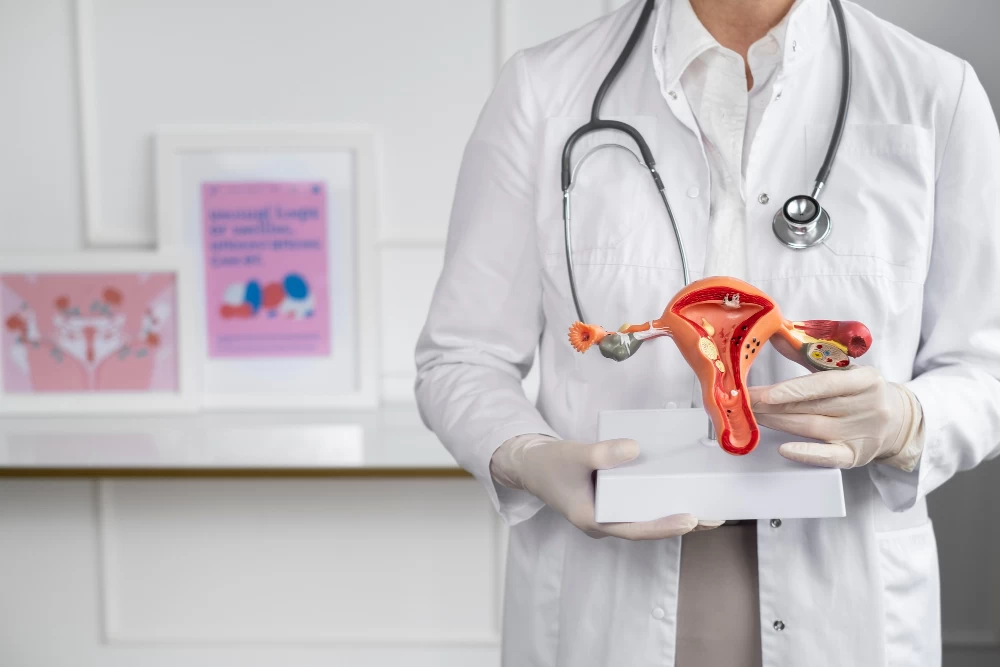Gynecological Surgeries
Today's surgical procedures are increasingly shifting toward minimally invasive surgeries, which cause the least damage to body tissues. Developments in technology are also bringing many innovations to the healthcare sector.
In globally accepted gynecological surgeries, the first choice is always operations that can be performed vaginally. Laparoscopic surgery, known as a closed method, or the less preferred open method is used for surgical interventions that cannot be performed through vaginal routes. However, the number of surgical procedures that can be performed vaginally is quite limited, especially in cases of uterine prolapse. The V-NOTES technique allows for many surgical interventions to be performed vaginally.
What is the V-NOTES Method?
V-NOTES (Vaginal Natural Orifice Transluminal Endoscopic Surgery) is a method that performs surgery through the vaginal route using a special apparatus and endoscopic (closed) techniques.
What are the Advantages of the V-NOTES Method?
The V-NOTES technique provides easier access to the ovaries and tubes compared to traditional vaginal surgery. Since this method is performed with the aid of a camera, even minor details like bleeding can be detected more easily, allowing for more effective intervention. This presents a significant advantage over long-used vaginal surgical methods.
- It is safe and comfortable for obese (overweight) patients.
- Patients can often be discharged from the hospital in a very short time after surgery.
- Discharge can often occur within the same day.
- Due to the very short hospital stay, the likelihood of patients acquiring hospital infections is significantly reduced.
- Since pain levels are minimal post-surgery, procedures can be performed without the need for pain relief medications.
- The absence of any surgical incisions on the abdomen poses no cosmetic concerns, leading to satisfactory outcomes for patients.
- In patients who have previously undergone multiple abdominal surgeries, there is a risk of intestinal injuries during entry into the abdomen. However, surgeries performed using this method do not involve abdominal entry, eliminating this risk.
- Moreover, in patients who have previously undergone surgery for hernias (especially those involving mesh), the V-NOTES method is considered a safer option.
- This surgical method allows patients to return to social life very quickly.
What are the Disadvantages of the V-NOTES Method?
- The V-NOTES method is still relatively new, resulting in a limited number of specialists who practice it.
- There are also very few centers that perform the V-NOTES method.
What Surgeries Can Be Performed with the V-NOTES Method?
Many gynecological surgeries can be performed using the V-NOTES method. Examples include:
- Hysterectomy (uterus removal) surgeries
- Ovarian cyst surgeries (e.g., dermoid cyst)
- Tubal ligation surgeries
- Surgeries related to ectopic pregnancy
- Prolapse surgeries (such as uterine prolapse, vaginal cuff prolapse)
- Evaluation of tubal patency in infertile patients
- Myomectomy (depending on the location of the fibroid, some fibroids may be removed)
- Diagnostic surgeries
Who Should Not Undergo the V-NOTES Method?
In some situations, the V-NOTES method is not recommended:
- In pregnant women
- In virgin women
- In women with deep endometriosis (chocolate cyst)
- In women with tubo-ovarian abscess
Aside from these cases, this operation can be performed on all other women.
Conclusion:
The V-NOTES surgical method is becoming increasingly preferred. Rapid discharge, quick return to social life, minimal or no pain, applicability in obese patients, and leaving no cosmetic scars are among the main reasons for its preference.
However, the novelty of the V-NOTES technique and the limited number of centers performing it are disadvantages. With the widespread adoption of the technique in the near future, it is expected to become even more popular.


